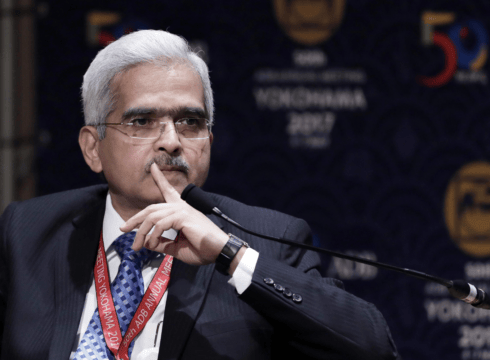On the wholesale side, the governor said that the RBI was mulling pilots for instruments such as commercial papers and certificates of deposits
CBDCs do not pose disintermediation risks for banks as they have been envisaged as being non-remunerative and non-interest bearing, Das added
RBI commenced the retail CBDC pilot in December 2022 and achieved the 10 Lakh transactions a day target in December last year
Inc42 Daily Brief
Stay Ahead With Daily News & Analysis on India’s Tech & Startup Economy
Reserve Bank of India (RBI) governor Shaktikanta Das on Monday (May 6) reiterated that the central bank was working on offline functionality for digital currencies.
“One of the key features of cash is that it works offline… We are working on making the CBDC (central bank digital currency) transferable in the offline mode also,” Das said as per a Bloomberg report.
Speaking at an event hosted by the Bank for International Settlements, the Governor also said that the RBI was also working on introducing programmability features and other value-added services to push for financial inclusion and boost CBDC volumes.
The statement comes three months after the central bank said that it will enable additional functionalities such as offline capability and programmability for CBDC retail payments.
The fresh expansion of CBDC for the retail segment comes a year after the RBI first began a pilot back in December 2022. A year later in December 2023, the pilot service achieved the target of 10 Lakh transactions a day.
However, the central bank is now looking to further shore up the numbers. Governor Das added, “We have leveraged the existing merchant infrastructure on the UPI to facilitate CBDC transactions…while the number of transactions have reached a high of 10 lakh a day, we still see preference for UPI among the retail users. We of course hope that this will change going forward”.
He also claimed that the CBDC retail pilot has been envisaged with fuelling a change in consumer behaviour with regards to bank deposits.
He also emphasised the need to connect payment systems such as the UPI with the CBDC. Combining CBDC QR codes with UPI QR codes and creating single points of acceptance is seen as the first step. Das said that higher adoption of digital currency has “great” potential to bring down costs of cross-border transactions while offering a much safer alternative to private digital currencies.
The CBDC trial run is also currently being carried out in the government securities market and the interbank call money market and the RBI is also mulling pilots for commercial papers and certificates of deposits for wholesale CBDC users.
Concerns About CBDCs Vs Banks
Called the E-Rupee, India’s CBDC leverages distributed-ledger technology and has been envisaged as a digital alternative to physical cash. But concerns such as data privacy and cybersecurity remain as key roadblocks to full-fledged rollout.
Allaying fears about CBDCs posing a risk for disintermediation of banks, Das added that the Indian digital currency has been envisaged as being non-remunerative and non-interest bearing, thereby, mitigating the risk.
For the uninitiated, disintermediation involves the removal of banks from the value chain and allowing users to transact or invest directly.
Addressing the event, he again pushed for anonymity of the CBDC. “Anonymity can be addressed through legislation and/or through technology. For example, through permanent deletion of transactions. That could be one method. The basic principle is that CBDC can have the same degree of anonymity as cash. No more and no less,” he said, according to a separate ET report.
As per US think tank Atlantic Council, a mere 36 countries are running CBDC pilots while just three nations namely Jamaica, Bahamas and Nigeria have fully launched digital money for the general public.
{{#name}}{{name}}{{/name}}{{^name}}-{{/name}}
{{#description}}{{description}}...{{/description}}{{^description}}-{{/description}}
Note: We at Inc42 take our ethics very seriously. More information about it can be found here.


